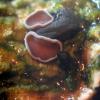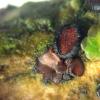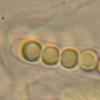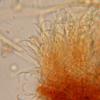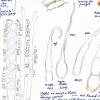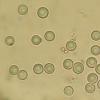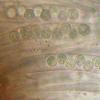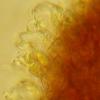
12-12-2025 18:39
Mirek GrycHello everyone.Macrofeatures similar to Mollisia b

09-12-2025 12:06
 Andgelo Mombert
Andgelo Mombert
Bonjour,Je recherche l'article concernant Hypobryo

07-12-2025 16:07
Arnold BüschlenHallo, ich habe in einer Moos-Aufsammlung (epiphy

08-12-2025 21:04
Mark Stevens"Hello everyone,I'm relatively new to microscopy (

08-12-2025 18:59
 Lothar Krieglsteiner
Lothar Krieglsteiner
.. found by a seminar-participant, I do not know t

08-12-2025 17:37
 Lothar Krieglsteiner
Lothar Krieglsteiner
20.6.25, on branch of Abies infected and thickened

16-03-2014 22:00
Hello,I found this species a few months ago but ha

08-12-2025 13:39
Thomas Læssøehttps://svampe.databasen.org/observations/10572899
asco sur buxus
Jean Pierre Dechaume,
05-05-2008 21:41
 Espèce de pézize, de 1-2 mm, d'abord en bouton, puis étalée, avec la marge avec poils apprimés,
Espèce de pézize, de 1-2 mm, d'abord en bouton, puis étalée, avec la marge avec poils apprimés,crochus.
Asques iode negatif. Spores de 4 μ, lisses. Cystides branchues, hyalines, un peu tortueuses.
Sur branchettes de buxus, en compagnie de Eutryblidiella hysterinum, et quelquefois même au contact.
Sûrement quelqu'un a vu ça.
H O Barral a dû le recevoir de l'Anjou pour examen.
Découverte et photo de A Molière.
Guy Garcia,
05-05-2008 21:54
Re:asco sur buxus
Unguiculariopsis ravenelii subsp. hamata = Peziza hamata
Jean Pierre Dechaume,
05-05-2008 22:12

Re:asco sur buxus
Merci beaucoup Guy... Quelle célérité!!!
Guy Garcia,
05-05-2008 22:18
Re:asco sur buxus
Pour confirmation va voir à http://www.cybertruffle.org.uk/cyberliber/59575/0032/0053b.jpg
et pages suivantes.
et pages suivantes.
Guy Garcia,
05-05-2008 22:24
Re:asco sur buxus
J'ai d'ailleurs été un peu trop rapide et j'ai commis un lapsus et même une combinaison inédite (Peziza hamata)!
Il faut lire Unguiculariopsis ravenelii subsp. hamata = Pithyella hamata
Il faut lire Unguiculariopsis ravenelii subsp. hamata = Pithyella hamata
NC NC,
06-05-2008 01:07
Re:asco sur buxus
Dear Guy,
Well done to point him to Wen-ying Zhuang's work. A paper about our search for the type specimen of this species is in Korf, R. P., T. Iturriaga, & W.-y. Zhuang. 1988. Lost and found: a discomycete pilgrimage. Mycotaxon 31: 85-88, also available on the Cyberliber website.
Dick
Well done to point him to Wen-ying Zhuang's work. A paper about our search for the type specimen of this species is in Korf, R. P., T. Iturriaga, & W.-y. Zhuang. 1988. Lost and found: a discomycete pilgrimage. Mycotaxon 31: 85-88, also available on the Cyberliber website.
Dick
Hans-Otto Baral,
06-05-2008 18:34

Re:asco sur buxus
I have today received the same specimen, leg. A. Molière, mis. Jean Mornand, on Buxus with Rhytidhysteron hysterinum. I identified it as U. ilicincola at first glance. When I look in Zhuang's key, I must say that it is somewhat unfortunate to key out species according to their substrate.
U. ilicincola and U. ravenelii ssp. hamata appear not to be very distinct. In Zhuang's paper I find on p. 40 the distinguishing characters: U. ilicincola with smaller apos, longer non-dextrinoid hairs, larger excipular cells, lack of subhymenium, presence of subspherical and larger spores.
This might be all true, but in addition to this I found a striking extracellular hyaline exudate in the hymenium which is present in the three specimens I have seen, and which I did not see in any other speices of the genus (I do not know ssp. ravenelii).
U. ilicincola and U. ravenelii ssp. hamata appear not to be very distinct. In Zhuang's paper I find on p. 40 the distinguishing characters: U. ilicincola with smaller apos, longer non-dextrinoid hairs, larger excipular cells, lack of subhymenium, presence of subspherical and larger spores.
This might be all true, but in addition to this I found a striking extracellular hyaline exudate in the hymenium which is present in the three specimens I have seen, and which I did not see in any other speices of the genus (I do not know ssp. ravenelii).
Hans-Otto Baral,
06-05-2008 18:39
Hans-Otto Baral,
06-05-2008 18:41
Hans-Otto Baral,
09-05-2008 12:06

Re:asco sur buxus
Here I tested the specimen of A. Molière for the dextrinoidity of the hairs. U. ssp. hamata is said to have dextrinoid hairs (Zhuang), but I cannot see the least reaction. I mounted directly in MLZ, and later also tested KOH-pretreatment, first at room temperature and later by shortly boiling the slide. Washing with water and treating with MLZ yieded no reaction, see the attached image.
Zotto
Zotto
NC NC,
09-05-2008 12:36
Re:asco sur buxus
Dear Zotto,
I would refer to the the yellow-brown reaction of the hairs in your photo as "dextrinoid"! They certainly don't look hyaline. Maybe we use the term differently.
Dick
I would refer to the the yellow-brown reaction of the hairs in your photo as "dextrinoid"! They certainly don't look hyaline. Maybe we use the term differently.
Dick
Hans-Otto Baral,
09-05-2008 19:05

Re:asco sur buxus
Dear Dick
The excipulum is, of course, redbrown (in any mountant), but the hairs look yellowish because of the iodine colour. A dextrinoid reaction of cell walls is some kind of rose-red. I am sure that I would be able to make the very same photo showing yellowish hairs in U. ilicincola with the very same treatment. Possibly the dextrinoid reaction is variable within a species. I saw it very well in some specimens of Hyaloscypha, but I remember I found it not that constant between populations of the same species.
Zotto
The excipulum is, of course, redbrown (in any mountant), but the hairs look yellowish because of the iodine colour. A dextrinoid reaction of cell walls is some kind of rose-red. I am sure that I would be able to make the very same photo showing yellowish hairs in U. ilicincola with the very same treatment. Possibly the dextrinoid reaction is variable within a species. I saw it very well in some specimens of Hyaloscypha, but I remember I found it not that constant between populations of the same species.
Zotto
Guy Garcia,
09-05-2008 20:37
Re:asco sur buxus
La couleur de l'hyménium semble également plus en accord avec ilicincola ("disco concavo pallide brunneo vel purpureo v. roseo-cinereo". Alors que celui de hamata est décrit "disco aurantiaco obscurante".
Mais, ces deux taxons sont-ils vraiment distincts ?
Amitiés, Guy
Mais, ces deux taxons sont-ils vraiment distincts ?
Amitiés, Guy
